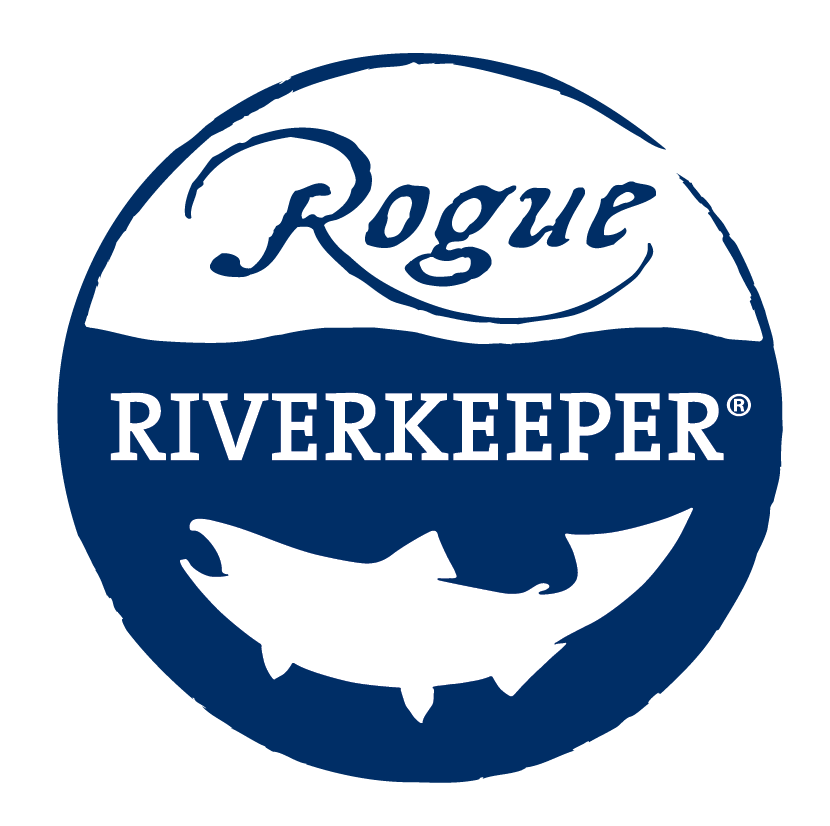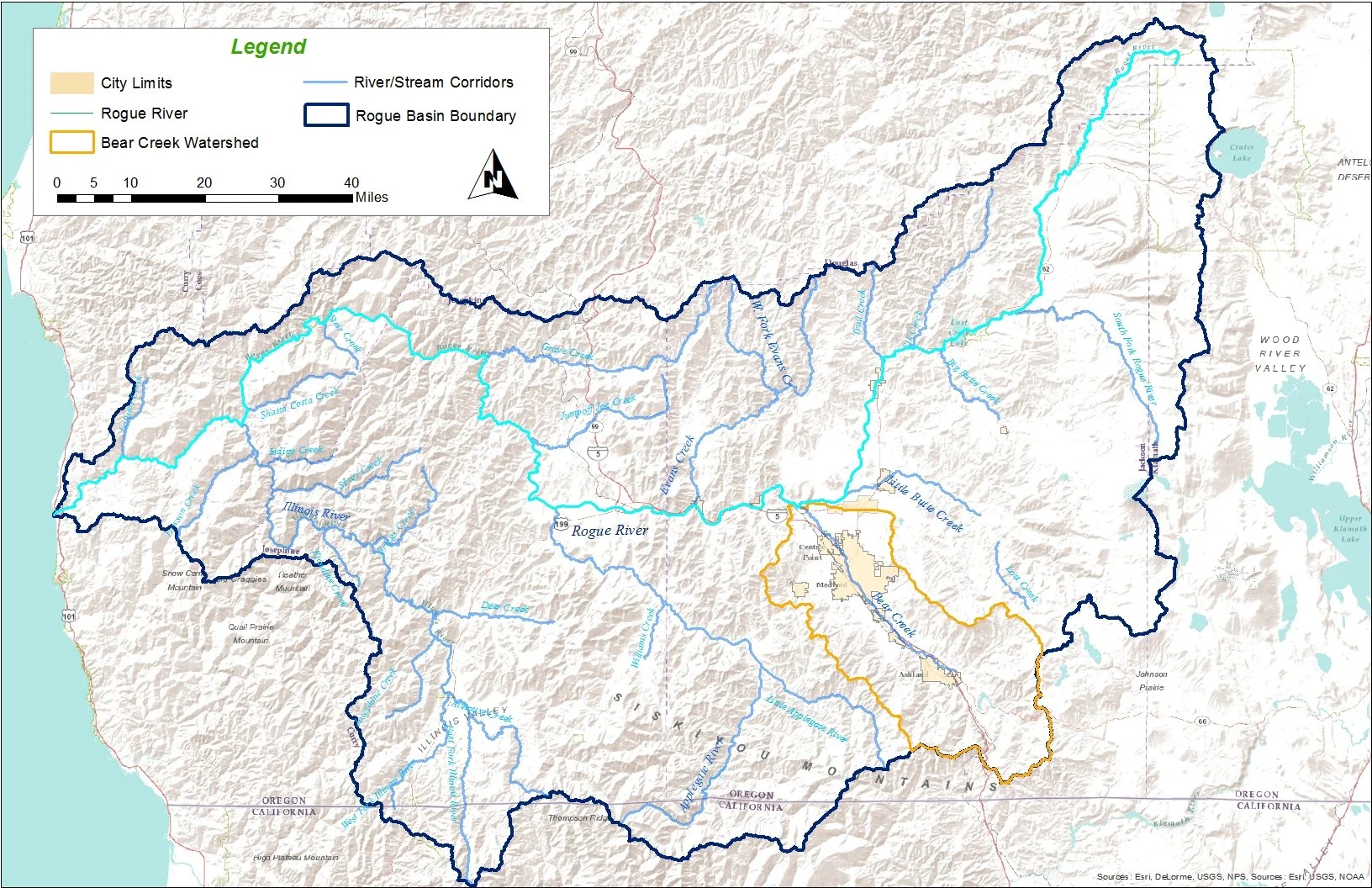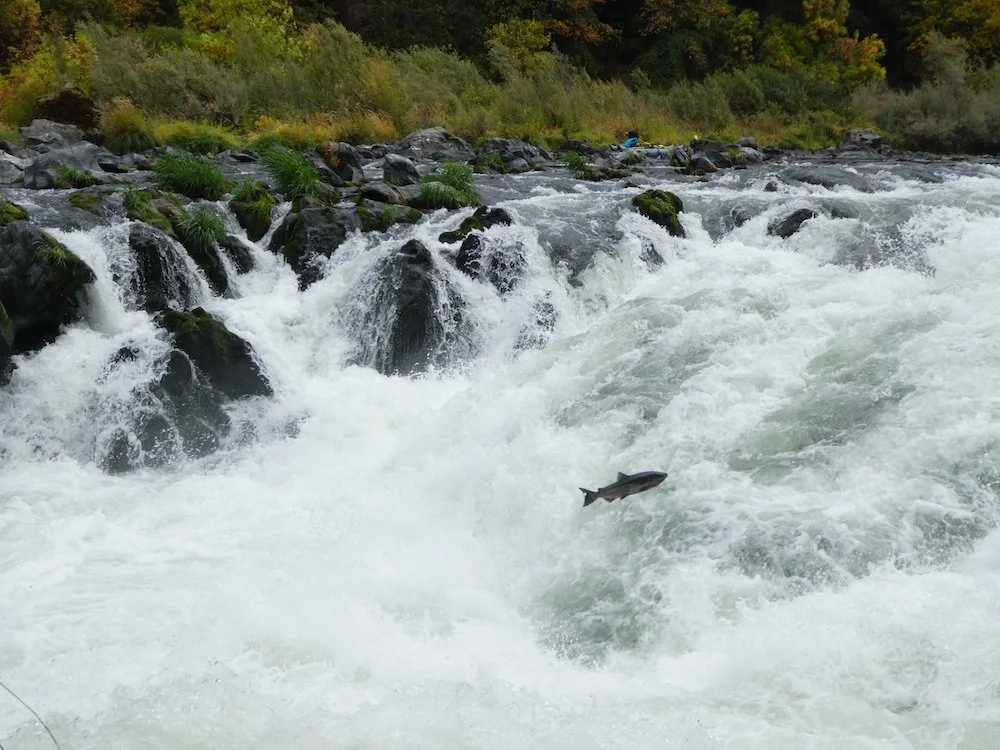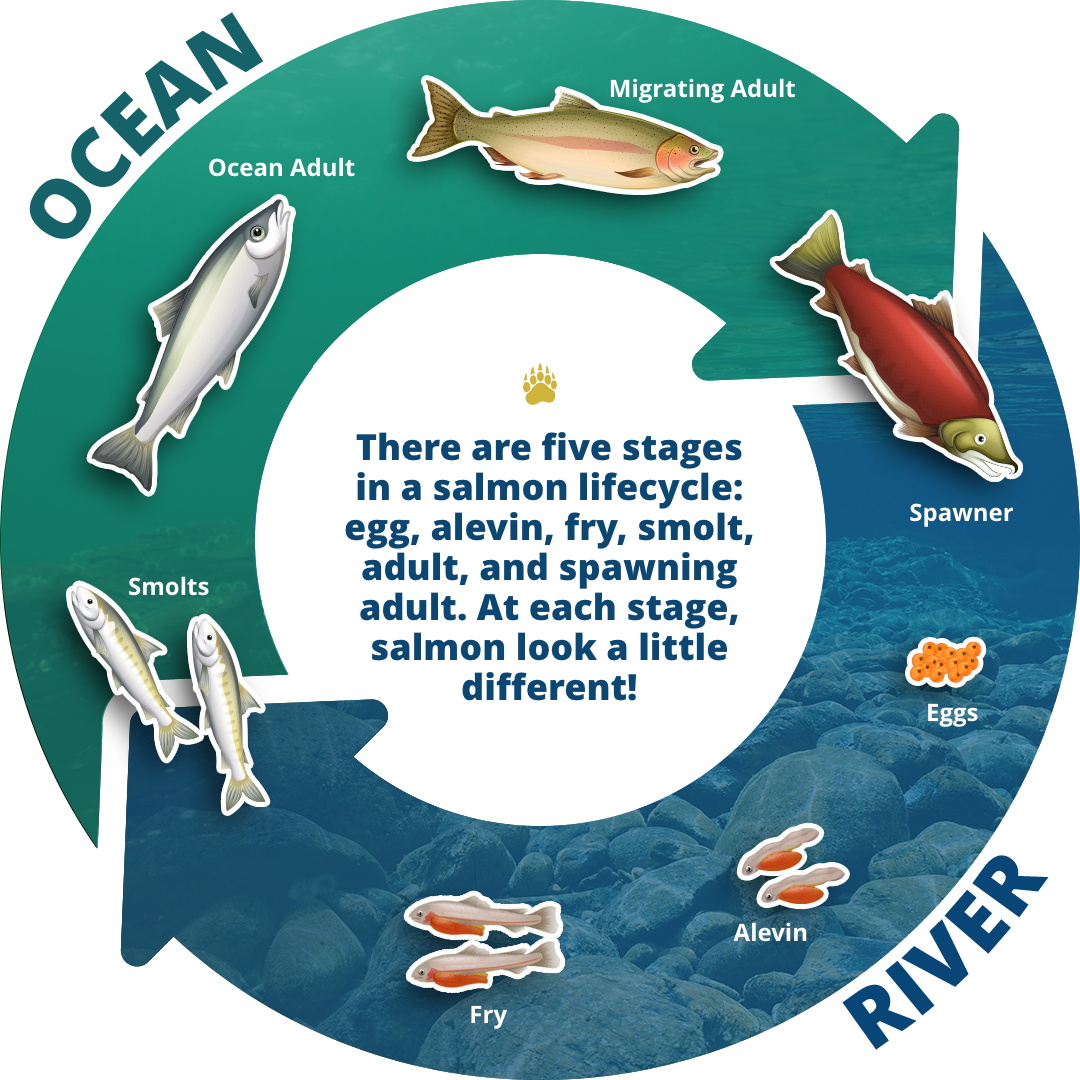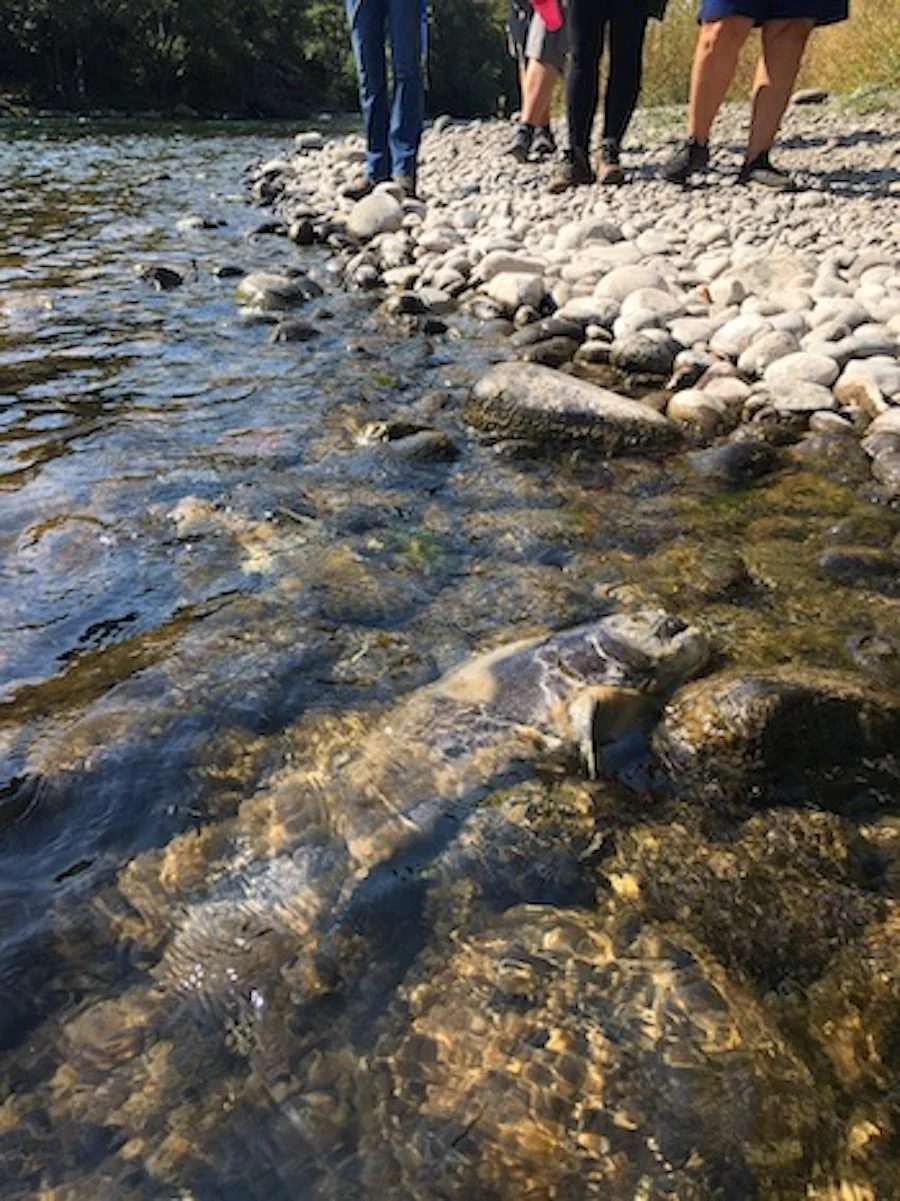Salmon return to Bear Creek. See them for yourself!
Written by Frances Oyung in October 2025
Chinook salmon swimming up Bear Creek to spawn. Credit: Still Mountain Studios
Map of the Rogue basin, including the Bear Creek watershed and other tributaries to the Rogue.
Credit: USGS
The Rogue River basin is known for being a stronghold for native salmon. That is because the Rogue has, for the most part, cold, clean water and suitable habitat for these incredible wildlife diversity to survive. Of the five salmon species native to the west coast of North America, two are present in the Rogue and one is often easy to see in Bear Creek in late October when they return from the ocean to reproduce.
Starting around mid-September into early November, you can observe Chinook salmon (also known as king salmon) spawning in different sections of the Rogue basin. While this species of salmon is the largest on the west coast with average weights of 20-40 pounds, they come back from the ocean first when the fall rains are just starting, and thus, are easier to see, both because of their large size, but also because the creek levels are low and the water relatively clear before winter storms increase the cloudiness or turbidity of the river and stream water.
Salmon jumping through Rainie Falls on the Rogue River. Credit: KS Wild
While fall-run Chinook enter the Rogue estuary as early as July, from mid-October to early November is the best time to view them in the Bear Creek watershed. Bear Creek is the most urbanized tributary of the Rogue River. Its headwaters are the Siskiyou and Cascade Range near the California border and it flows north through the densely populated areas of Ashland, Talent, Phoenix, Medford, and Central Point before it joins the Rogue River around four miles northwest of the town of Central Point. Because Bear Creek is the most urbanized watershed in the Rogue basin, many people are unaware that running through their towns and along the interstate we still have important habitat for native fish.
While salmon are born in both the tributaries and main stem Rogue, they spend most of their adult life in the Pacific, taking advantage of the nutrients of the ocean to grow to maturity. As adult salmon return to the Rogue to reproduce, some make their way up Bear Creek, seeking suitable habitat to spawn in. What salmon need for successful reproduction is cold, clean, well oxygenated water to dig their gravel nests known as “redds” to lay their eggs. Often, fall Chinook will find suitable spawning habitat around Central Point, so then they don’t go through the effort of traveling farther upstream, which is why the Central Point area is often an area with a large number of Chinook salmon visible. If you can get out to the Bear Creek Greenway in the vicinity of Pine St. in Central Point sometime between the 2nd week of October to the 1st week of November, one is likely to see salmon in Bear Creek. The Greenway between the Expo and Table Rock Road offers several vantage points with views of the creek. Look for fish moving upstream through riffles and digging with their tails in areas of moving water with small gravel to cobble-sized substrate.
After spawning, salmon will reach the end of their life cycles and return the nutrients of their bodies to their home spawning grounds. Credit: KS Wild
Fish that spawn in freshwater and live most of their adult life in the ocean are known as anadromous. Anadromous fish like salmon inhabit many different habitats through their life cycle. Each of these habitats, whether it is the open ocean or a small stream, need to provide critical elements to allow the fish to survive and reproduce. Other anadromous fish in the Rogue include steelhead trout (a sea-run rainbow trout), Pacific lamprey, green sturgeon, and white sturgeon. While these fish are not easy to see, they are present and even thriving in many parts of the Rogue basin.
While several species of fish are present in Rogue basin, Bear Creek is closed to fishing to protect wild fish already under pressure from the urbanization and water quality threats in that stream. If you see people harassing, snagging, netting, or angling that targets fish in Bear Creek or tributaries, please report this to the Oregon State Police dispatch at *OSP or 541-664-4600. The Oregon Department of Fish & Wildlife (ODFW) fish biologists would also appreciate reports of these types of activities. Poaching of all kinds can have an impact on the sustainability of wildlife.
Rogue Riverkeeper, a program of the Klamath-Siskiyou Wildlands Center, works to advocate and defend water quality to maintain a habitat to sustain native fish.
In order to keep the Rogue basin’s native fish populations strong, we will need to prioritize protecting the habitat they require throughout their life cycle: cold clean water with the appropriate habitat to reproduce in, a safe place in the tributaries to rear, free passage to the ocean, and the ability to return healthy and strong to their natal waters to reproduce.
Sign up to receive our email newsletter to learn more about how we work to protect fish and clean water for all.
